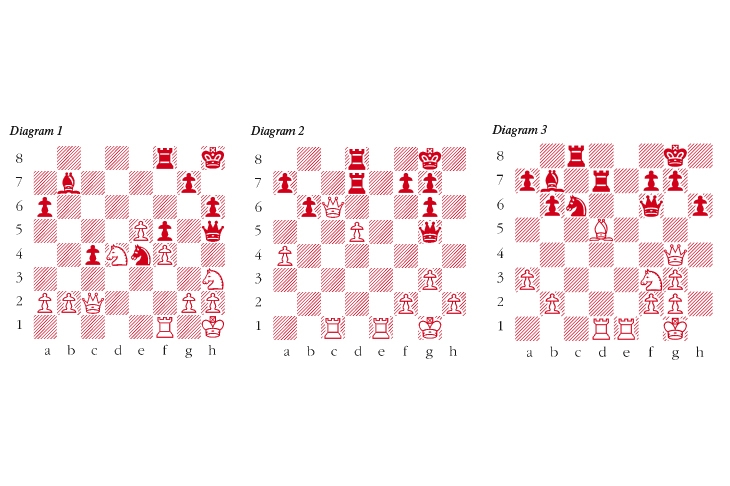Garry Kasparov was without a doubt Alekhine’s creative heir. The 1985-2000 world champion said himself that he became entranced at an early age by Alekhine’s dynamic style, and that he was particularly impressed by Alekhine’s sudden attacks which came like lightning from a clear sky. This week some further examples of Alekhine’s genius, and a clear case where the great man’s influence could be detected in the play of his admirer.
Torres-Alekhine, Simultaneous display, Spain 1922
(see diagram 1)
Black’s next sets up a deadly double check.
28 … Qxh3! 29 gxh3 Nf2+ 30 Kg1 Nxh3 mate
Alekhine-Colle, Paris 1925 (see diagram 2)
30 Qxd7! Rxd7 31 Re8+ Kh7 32 Rcc8 Rd8 33 Rexd8 Black resigns The unfortunate situation of the black queen blocks the escape of the king.
Kasparov-Karpov, World Championship (Game 11) Moscow 1985 (see diagram 3)
In this position White has a slight initiative but after 22 … Rd6 there is every possibility that the game will end as a draw. Instead Karpov blunders. 22 … Rcd8? This is a strange oversight for two reasons. Firstly, White’s next move is not at all difficult to see. Secondly, if White didn’t have this resource, he would stand worse. So, it would be odd for Kasparov (in a position where he held a small advantage) to allow a simple and obvious move that led to him being worse. 23 Qxd7! This does not force mate as in the Alekhine example but the activity of the white forces quickly leads to decisive material gains. 23 … Rxd7 24 Re8+ Kh7 25 Be4+ Black resigns After 25 … g6 26 Rxd7 White will win a further piece as 26 … Ba6 27 Bxc6 (27 Bd5 also wins easily) 27 … Qxc6 28 Rxf7 is mate.
Raymond Keene
Alekhine’s heir

issue 25 November 2017




Comments